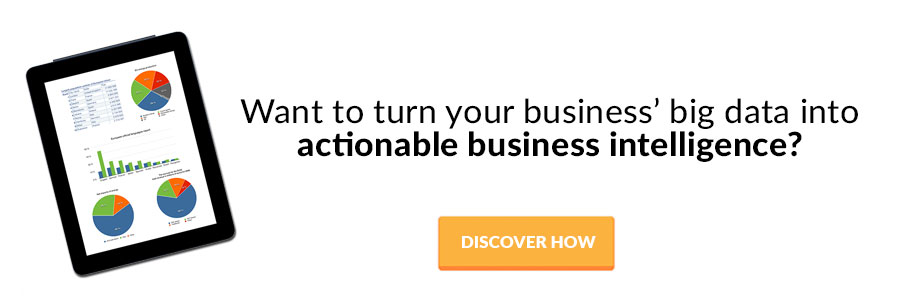The contact center space is not what it once was. Previously based on a single communication channel (the telephone), it has since evolved into a far more complex and multichannel enterprise responsible for managing the majority (if not all) of a business’ customer relationships. No small feat by any definition. However, with the growing advancements in technology and the increasing number of potential customer touch points, the ability to gain greater insight into what makes each consumer tick has never been more within reach. And yet, with the exponential amount of client data – Big data to be specific – traveling through today’s contact centers, comes the exponentially difficult task of wrapping your hands around it all and putting it to good use. After all, with 90% of the world’s data created in the last two years (KPMG) the potential is huge but so is the undertaking.
While many companies have discovered ways to collect and even organize their big data, turning it into actionable intelligence has proven to be quiet the challenge. According to a recent study conducted by both Salesforce and Forrester, 76% of companies express a lack of real-time analytics and unified reporting as one of the key hurdles facing customer service managers. And yet most consider such access to actionable data a key stepping stone to delivering any form of world-class customer service in the future. Among those few businesses able to manage their data (perhaps only in part), 74% fail to gain access to the results for up to four weeks!
But the big issue with big data extends far beyond just access and analysis. The challenge of how to manage and interpret it is compounded by the ongoing lack of inter-departmental communication occurring in most of today’s companies. With businesses expected to utilize over 9.6 software-as-a-service solutions by the end of 2014 (Forrester), the inability to consolidate, access, and leverage the various sources of customer data (i.e.: accounting, support, etc.) exacerbates the issue. In short, data for the sake of data doesn’t do a business any good; the ability to properly combine, manage and derive meaningful intelligence is what will provide businesses a competitive edge.
So how can one begin to derive meaningful insights from Big Data:
Compatible Solutions through the Cloud: An increasingly popular approach to managing large sleuths of information is via the cloud, with approximately one-third of all data projected to pass through it by 2020. Unlike traditional systems, cloud’s open architecture facilitates the ability to consolidate disparate information and solutions onto a single platform as a first step towards gaining a complete picture of a company’s customers. With cloud-based solutions, software incompatibility and information disparity becomes a thing of the past while enhancing a company’s ability to truly know what its customers expect and need.
Reporting and Analytics: The ability to derive KPIs (Key Performance Indicators) from every data point traveling through a contact center using real-time reporting and analytics is but another pre-requisite to handling big data. Whether it’s Average Speed to Answer, Abandonment Rate, Call duration, Occupancy, Adherence to Schedule, Call Wrap Up Time, or Call Volume Forecasting, each provides important actionable intelligence to help manage and respond to customer needs and changes in market demand. Coupled with additional data points from other aspects of a business (i.e.: accounting, support, marketing, etc.) and the sudden ability to dive deeper into what drives customers becomes inherently more interesting and valuable.
“Edge” Computing versus Centralized: With 22 billion end-devices expected to exist within the next few years, the amount of data likely to be created will quickly make today’s current analytical challenges appear moot by comparison. And yet, as its stands, the majority of today’s technologies and networks continue to use old centralized systems to meet the demand rather than seek suitable alternatives capable of handling the upcoming burden. However, with “edge” computing technology, the ability to combine the untapped resources of so many end-devices to assist in the distribution of tasks currently expected of cloud make for a much more stable, sustainable, and scalable infrastructure capable of making big data a reality rather than simply a pipedream.
Big Data derives its name from the very fact that it is HUGE. And as with any big project, the challenges can be daunting. However, the right technology, internal infrastructure, and business processes, the potential value behind the many data points passing through the average contact center could be limitless. Certainly worth a try.





